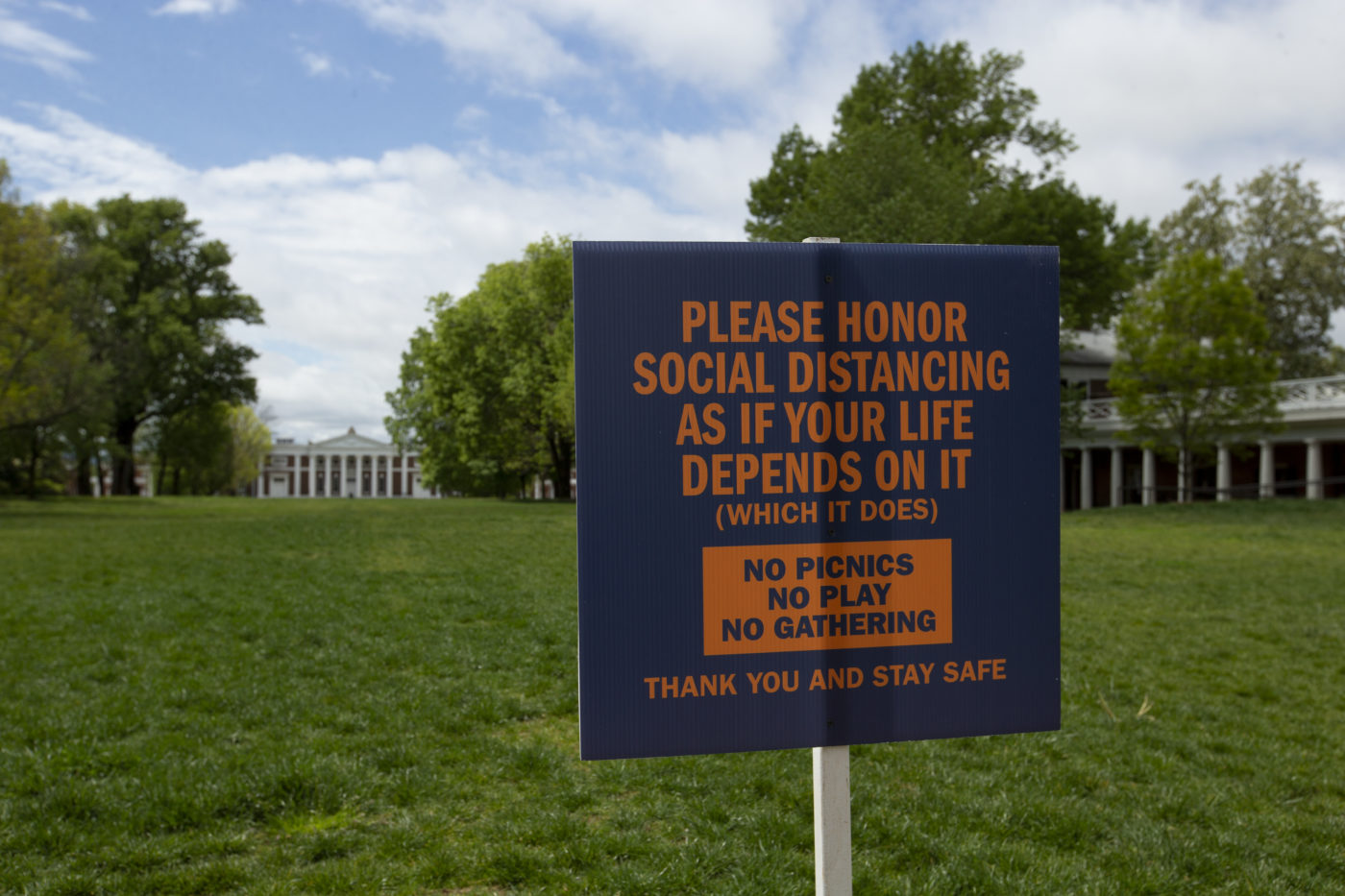The University of Virginia announced Friday plans to lift most COVID-19 restrictions implemented amid last week’s spike in virus cases.
Effective immediately, the university will permit gatherings of no more than six but will continue to limit indoor dining groups to two. In a Friday email to the UVA community, university officials said indoor dining in large groups — at dining halls and elsewhere — has been “a significant source” of COVID-19 transmission.
Students may also leave their residences for nonessential activities, effective immediately. Previous restrictions asked students to go outside only for essential errands — like eating at dining halls, attending in-person class or engaging in individual outdoor exercise.
Citing concerns that the virus may spread into the Charlottesville community, UVA will maintain limitations on in-person volunteer activity, with the exception of students who volunteer as emergency medical technicians or firefighters and who have been vaccinated.
Starting Saturday, the university will open recreational facilities and libraries to students under the same modified conditions previously in place that require mask-wearing and physical distancing.
Under last week’s restrictions, all in-person gatherings were prohibited and recreational university facilities and libraries were closed, although students continued to attend the few in-person classes offered at UVA.
The changes follow a decrease in cases of COVID-19 at UVA since restrictions were first implemented Feb. 16. The university’s COVID tracker reported 26 new cases of the virus on Thursday, down from daily case counts in the hundreds last week. The percent positivity rate on Grounds — that is, the percentage of people with positive results out of all those tested — has fallen from 4.41% to 2.19%.
UVA leaders encouraged students in the Friday email to stick to social pods or bubbles to prevent further surges.
“Socializing with a small group of people and limiting contact with people outside that group reduces the spread of the virus. Bouncing from one group of 6 to another puts people in both groups at risk,” the email said.











